Glyn Macey: Demystifying watercolour mediums
Posted by Cass Art on 30th Sep 2019
Glyn Macey can often be found roaming the harbours, moorlands and coast of his native Cornwall, sketchbook in hand, recording the details of daily life and history. Such sketches are in turn used as the basis for his studio paintings. Using Winsor & Newton Professional Watercolour, Acrylic, mixed media and an array of mark-making techniques he endeavours to capture the underlying essence of the landscape, and the people who live in it. Glyn uses watercolour, acrylics, pencil and collage to gain the spontaneity of his work and the happy accidents that he loves. He believes that the unexpected unity of colour and texture in mixed media can often create the most exciting results.
Glyn was born in Newlyn, Cornwall in 1969 and he completed his HND in Graphic Design at Falmouth School of Art in 1991. He worked as a successful designer until 1998 when he 'retired' from designing in order to devote his time solely to painting. Since leaving college, he has lived in Penzance, Cornwall, allowing his artistic work to develop in response to the unique environment of West Cornwall.
Glyn gives us an insight into the different types of watercolour mediums, and how to use them.
AQUAPASTO
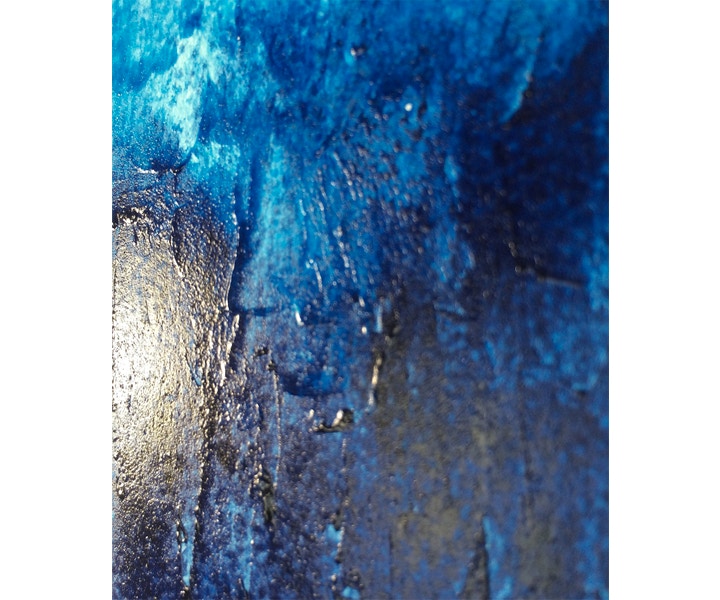
From a 19th century recipe made from Gum Arabic and Fumed Silica, AquaPasto is a translucent gel that thickens watercolour washes and reduces the flow of a traditional watercolour wash.
Pure spontaneous watercolours have no integral structure, but form and structure can be added to our watercolour process by adding AquaPasto.
This unique medium also has the property of allowing watercolours to be painted side by side without the colours blending wet in wet, which can be super useful when used alongside our more traditional wet in wet approaches.
To use, simply add a touch of Aquapasto to your palette before using a brush to combine with the neat watercolour until it thickens or thins to your liking. I say 'thins' as the medium is water soluble therefore a touch of water creates a creamier consistency.
The AquaPasto and colour can be mixed and applied with a damp brush for subtle textured effects or palette knife for heavier impasto passages but try not to create layers too thick as they could potentially crack.
For me, in AquaPasto land, subtlety of form is key.
Unlike acrylic impasto mediums, AquaPasto remains water-soluble after drying which means that it can be re-worked and manipulated as desired.
OX GALL LIQUID
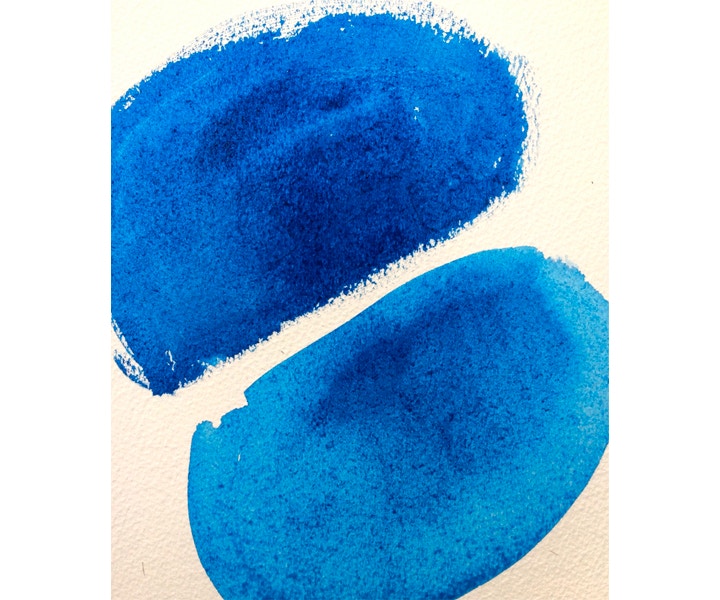
Ox Gall liquid increases the flow and 'wetness' of a watercolour wash.
Colours will soften and blend more easily using Ox Gall liquid and a fascinating and unique property of this medium is the 'marbling' effects that can be achieved. I use these marbling properties in my own landscape and textured work (see Mousehole) for Ox Gall marbling in the quaysides.
Ox Gall also helps to make colours set and stain into your paper surface therefore making them harder to lift. So if, like me, you love to glaze your colours, Ox Gall medium will become a best friend in the studio.
Watercolour papers that have a lot of added sizing help to stop the paper from buckling. But the downside of the addition of sizes to the paper fibres is often that it will inhibit the natural flow of water leading to 'beading' which is never a joy. This is where Ox Gall comes in as it helps to 'wet' the paper properly allowing a better, softer wash.
To use Ox Gall, simply add a few drops to your water pot and let the medium do its thing, adding fluidity and softness to your mixed washes while adding strength and staining to the colour itself.
GUM ARABIC
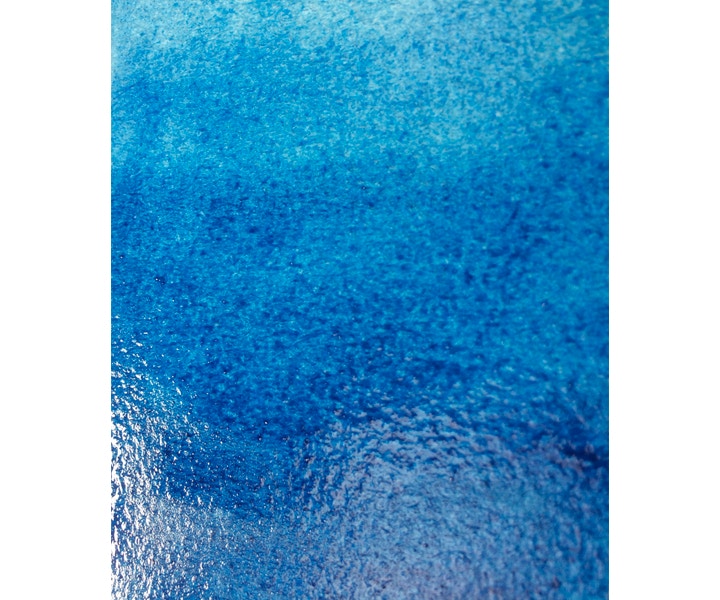
Gum Arabic is well known as the binder used in most watercolour paints, however Gum Arabic can also be used as a solution that increases the transparency and gloss of watercolour.
This unique medium also reduces the staining properties of watercolour helping colours to be 'lifted' if needed which is useful when wishing to remove areas of colour to create ambiguous passages, such as steam or smoke passages in our paintings. You can see an example of removed 'smoke' in the Mousehole painting.
Gum Arabic can also be used to slow the drying time of watercolour so is perfect as a little studio helper for passages combining colour such as sunsets, giving you more time to work with your washes.
One of my watercolour artistic hero's Samuel Palmer made extensive use of Gum Arabic in his glowing watercolours, adding depth and richness to the magical layered washes.
Never use Gum Arabic straight from the bottle.
Instead either dilute your colour with water before adding a touch of Gum Arabic as this will affect only the colour and area that you want to adjust.
Alternatively, add the medium to your water pot which in turn affect all of the colours that you mix.
MASKING FLUID
Masking fluid is used primarily to protect areas of your painting from Warercolour washes made during the painting process. It acts as a mask over white paper or previously painted dry areas, and note the use of the word 'dry' as if masking fluid is used over wet or damp paper the fluid will begin to combine with the paper and rip the surface when removed. Never a good thing!
Art masking fluid has a yellow tint making it easy for the artist to see exactly where they are using it on white paper, but if you are using softer paper or if there is a possibility of the yellow staining the paper, go for the colourless version.
This latex medium dries quickly so be sure never to use your best brushes for application or they'll never forgive you. Instead use either an old brush or a painting knife to apply the medium.
When using masking fluid be sure to let it dry fully before adding your watercolour washes and once your wash or painting is completely dry remove the making fluid by rubbing with an eraser or your finger tip. The dry masking fluid will roll up into small ball shaped pieces leaving the crisp outlined masked areas as required.
GRANULATION MEDIUM
Granulation medium increases the 'granulation' of your chosen colour or tints. That is to say, it helps to create a pleasing mottled effect in the colour.
I often use the medium to add implied interest and texture to otherwise flat areas of colour. I find that this effect is particularly useful when I'm looking to add drama to a painting as can be seen in the illustration 'Summer Storm'.
For this image I used Granulation Medium neat from the bottle to mix with the tube watercolour, letting the paint run and merge spontaneously as only watercolour truly can.
Working well with all colours, this medium becomes supercharged when used with an already naturally granulated colour such as French Ultramarine, Burnt Umber or the Sienna's.
While granulation medium can be used in combination with water to produce subtle effects, the most dramatic results happen when mixing tube watercolour purely with the medium instead of water.
Using a combination of water and medium simply softens the granulated effect, so experiment to find the finish that is best for your painting subject.
The best results happen when painting flat or nearly flat, and the granulating properties of the medium enhance as it dries
IRIDESCENT MEDIUM
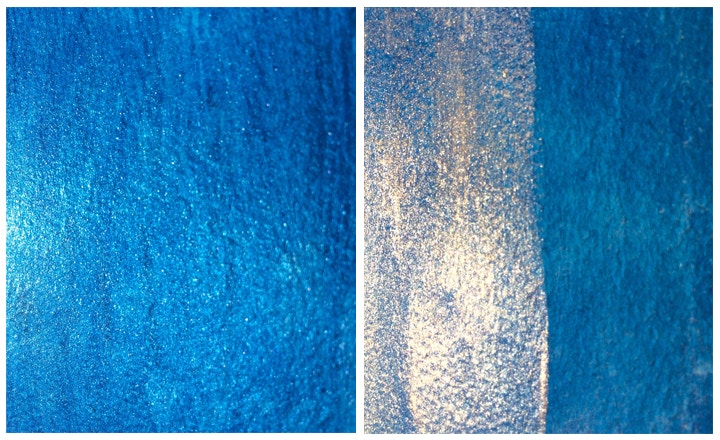
My children call Iridescent medium 'Mermaid juice', and when you open a bottle you'll see exactly why they do! The medium is the consistency of runny honey and together with good quality watercolour paints creates the most wonderful pearlescent finish when mixed with watercolour washes.
The medium is translucent (albeit glittery) and therefore doesn't affect the colour or overall tone of the watercolour wash.
For me, Iridescent medium works best for washes over dark backgrounds as can be seen in the foreshore of the 'Summer Storm' painting.
Another fascinating use for Iridescent medium is its use as a glaze over dried passages of paint. I often use the medium during the finishing of an artwork to add an extra little something to specific areas.
These areas might well be specific passages that I want the viewers eye to be drawn, or often areas that I feel need a little sparkle or depth.
Iridescent medium is surprisingly subtle in its finish, adding interest and a glow to an artwork.
For me, I avoid glazing the whole painting believing that less is more when it comes to the use of mediums, so instead I carefully plan which areas I wish to enhance.
Glyn Macey demonstrates the use of watercolour mediums these pieces of artwork:
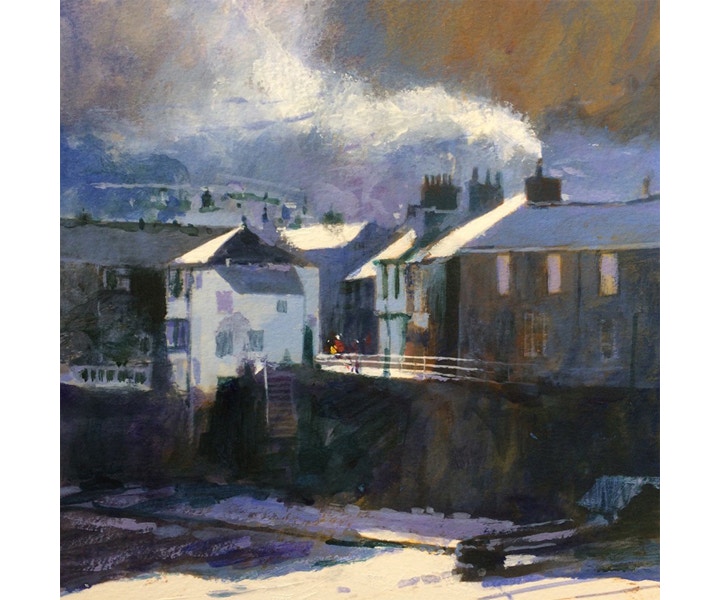
Mousehole - watercolour - 20” x 20” W&N Professional Watercolour, Gum Arabic, AquaPasto, Ox Gall Liquid
Using Gum Arabic in tints to enable ‘lifting’
Using AquaPasto to increase texture
Using Ox Gall Liquid to enable stronger glazing capabilities
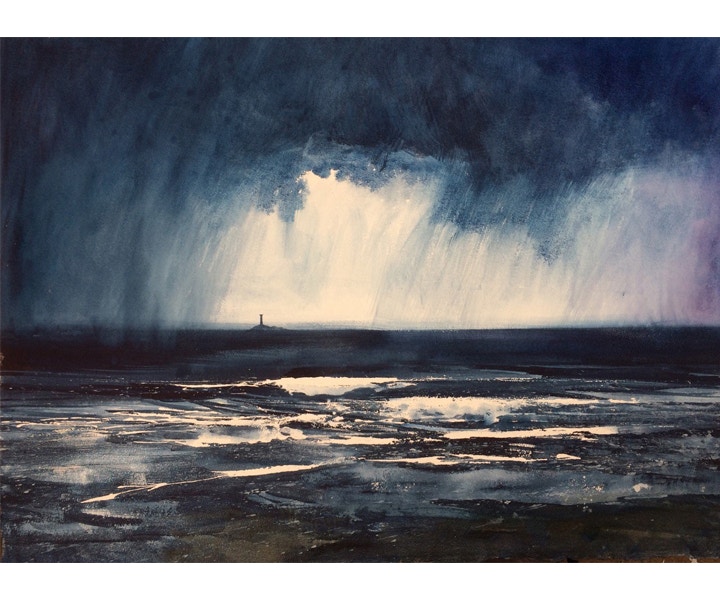
Summer Storm - 30” x 20” W&N Professional Watercolour, Masking Fluid, Iridescent medium, Granulation Medium
Granulation medium in sky for drama
Iridescent medium for sparkle on shore
Masking fluid for waves
Find out more about Glyn Macey on Instagram
FEELING INSPIRED?
Don't forget to hashtag #cassart on social media to show us your creations.


